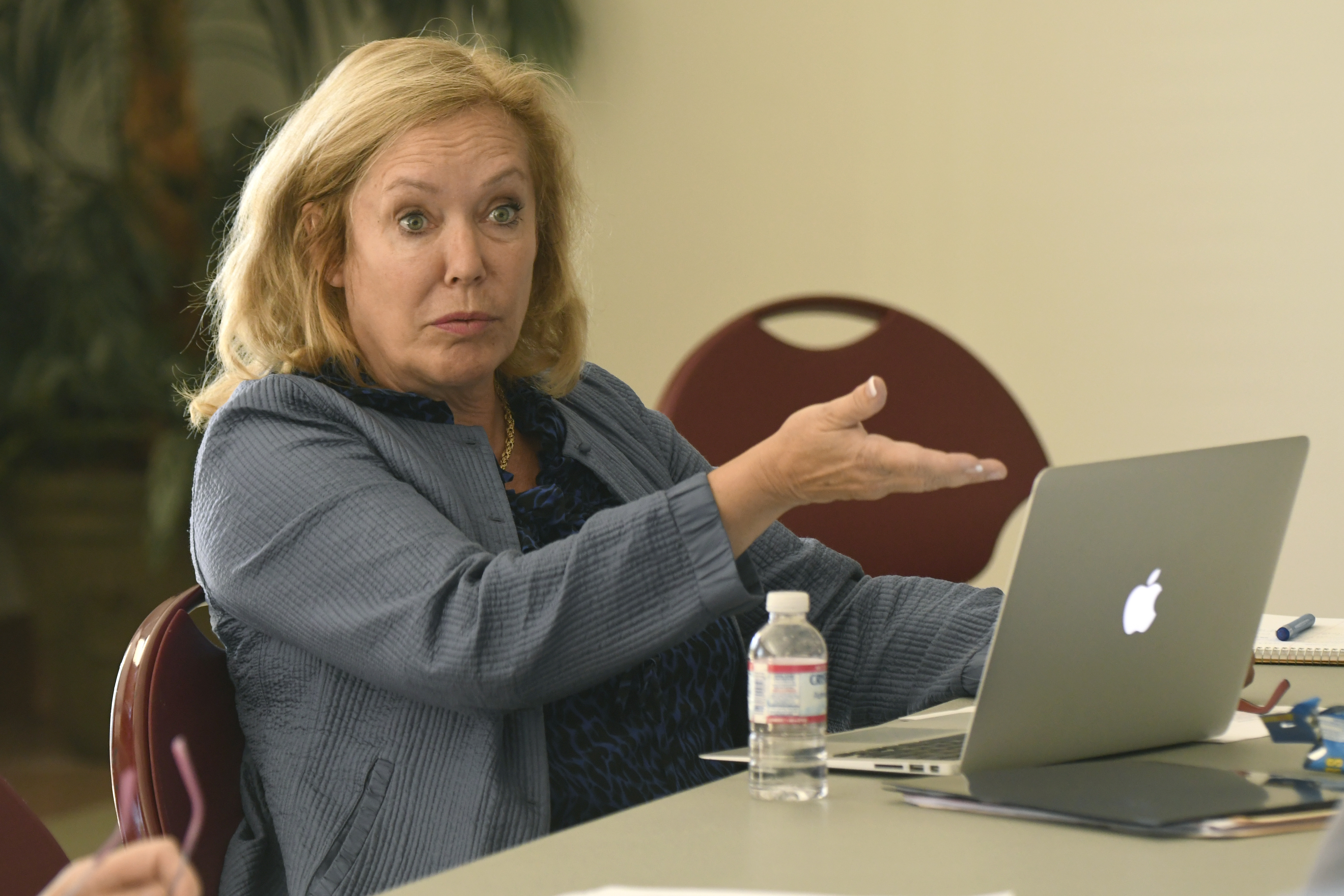The Great Vacancy Rate Debate
Landlords Ask: What Housing Crisis?

Precious little ground was gained last Thursday in the inaugural effort of a new landlord-tenant task force convened to address Santa Barbara’s housing crisis. The group, in fact, barely made it out of the starting gate, with the landlords demanding more accurate information about vacancy and eviction rates, and suggesting the problem itself is far less severe than the public has been led to believe.
City-appointed mediator John Jostes, a former planning commissioner who’s successfully brokered peace agreements at the regional and national levels, began the meeting hosted at the Franklin Center by attempting to adopt a general problem statement for all parties to agree on: rents are high, the vacancy rate is low, and tenants are being evicted with increasing frequency. That’s where the discussion stalled.
Laura Bode, director of the Santa Barbara Rental Property Association, who spoke most frequently and vociferously on behalf of landlords, interjected that the 0.6 percent vacancy rate cited by Jostes was inaccurate. She insisted that the figure was closer to 3.5 percent but declined to name her source. “We need facts,” Bode said many times. “We can’t just work on emotion.” Tommy Thompson, out of Orange County and the regional senior vice president of the statewide California Apartment Association, agreed with Bode. “We need to be full of facts,” he said, “not emotion.”

Since 1997, the Dyer Sheehan Group in Ventura has conducted biannual housing surveys throughout Santa Barbara and Ventura counties, specifically tracking the rental and vacancy rates of market-rate apartments. The real estate brokerage firm’s data is vetted and used by the UCSB Economic Forecast Project and Cal Lutheran’s Center for Economic Research and Forecasting. It’s also utilized by lenders, employers, and government agencies, including the City of Santa Barbara.
According to Dyer Sheehan, in April 2014 Santa Barbara’s vacancy rate was 0.6 percent, a figure frequently cited by city officials and media organizations to illustrate the depth of the housing dilemma. (Economists say a 5 percent vacancy rate represents a healthy market equilibrium.) Since 2014, the rate has increased to 1.3 percent, according to Dyer Sheehan’s April 2017 survey, which analyzed more than 2,100 city apartments units spread among dozens of multifamily properties. There are approximately 21,000 renter-occupied units in Santa Barbara, including single-family homes and condominiums. The vacancy rate reached its highest point since the recession when it climbed to 3.8 percent in April 2010.
To gather its data, Dyer Sheehan employs researchers who take information directly from property owners. Compared to their counterparts in Ojai, Thousand Oaks, Goleta, Carpinteria, and elsewhere, Santa Barbara’s landlords are notoriously tight-fisted with their numbers, said Dawn Dyer. It often takes seven or eight phone calls to engage them in a 90-second conversation. Dyer said that can be frustrating. “Knowing the market is to everybody’s advantage,” she said.
The survey was born out of a conversation 20 years ago between Dyer and former UCSB Economic Forecast director Mark Schniepp, who both recognized the need for reliable, aggregate data on apartment prices and availability. The survey began as a public service and remains so, Dyer explained. The $100 price tag per survey doesn’t cover the cost to create it.

Dyer’s partner, Paul Sheehan, said the real-world difference between a 0.6 and 3.5 percent vacancy rate is negligible. Both are well below the 5 percent threshold and both are indicative of a true housing emergency. “They’re quibbling over nothing,” he said of Santa Barbara’s landlords resistant to the types of tenant protections that will be discussed by the task force. “The difference doesn’t amount to a hill of beans, and anyone who says it does is creating a smoke screen to avoid the problem.”
Frank Rodriguez with CAUSE (Central Coast Alliance United for a Sustainable Economy), speaking on behalf of renters, grew exasperated by the suggestion of Bode and others that there might not be any pressing issues to solve. “How convenient,” he said. “That way, we could just live with the status quo.” He frequently referenced the mass evictions of working-class Latino families that took place at the Ivy Apartment complex on Carrillo Street shortly before Christmas. The landlords called that an isolated incident and asked for data to prove it was indicative of a trend. Rodriguez said that information, collected by the city’s rental mediation task force, has been particularly difficult to come by.
The low vacancy figures are also being attacked by owners and supporters of short-term vacation rentals, who complain the numbers have been cited by officials to deny conversion applications. The vacancy rate of higher-end condominiums and single-family homes — the types of residences more commonly rented to vacationers — is in actuality much higher than that of apartments, they claim. “The apartment study is comparing apples to oranges,” said broker and property manager Tiffany Haller. She pointed to a Department of Finance report that puts the City of Santa Barbara’s overall vacancy rate at 5.9 percent. Haller also stated that the Anapamu Street condo owner who was told by the City Council two weeks ago that his property couldn’t be converted into a short-term rental will be suing over the decision.
The city’s task-force meeting concluded with little progress made but also lingering optimism that the next get-together will prove more fruitful. At that August 24 meeting, possible improvements to the city’s rental mediation task force will be discussed.



